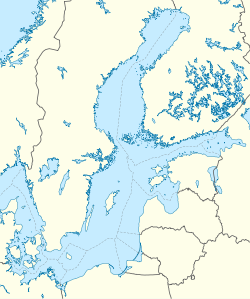 | |
| Geography | |
|---|---|
| Location | Gulf of Riga |
| Coordinates | 57°44′30″N23°18′00″E / 57.74167°N 23.30000°E |
| Administration | |
Estonia | |
| County | Saare County |
| Municipality | Ruhnu Parish |
| Settlement | Ruhnu village |
Gretagrund (or Greta-Grund) is a shoal located a few km southeast of Ruhnu island in the Gulf of Riga, Estonia.
